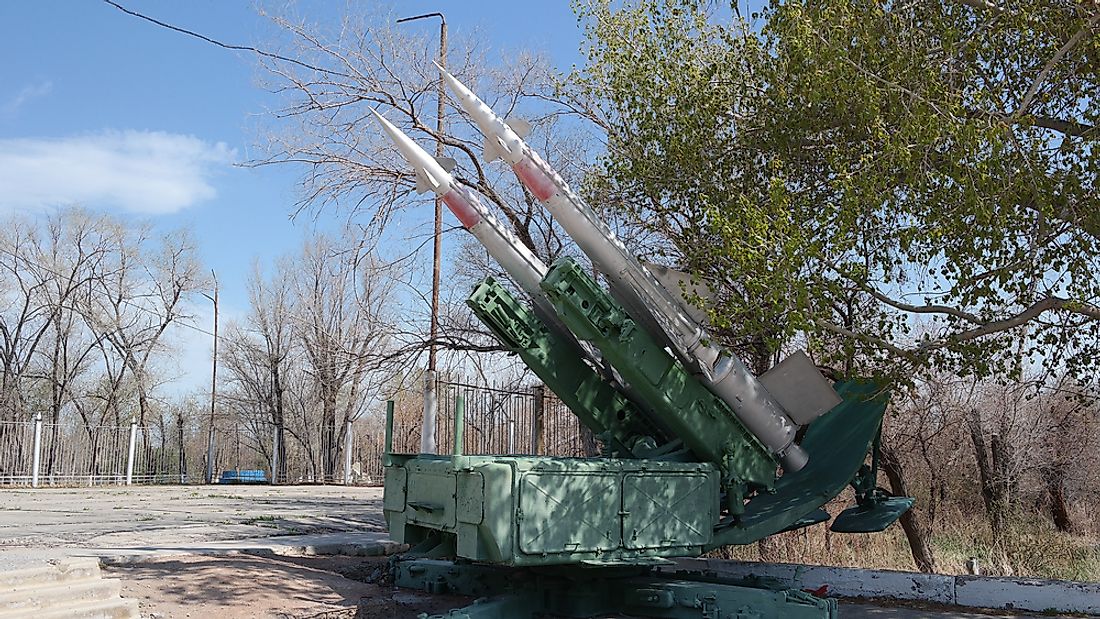Countries Who Gave Up Nuclear Weapons

In the entire world, several nations have given up the possession and manufacture of nuclear weapons, among them are South Africa, Belarus, Kazakhstan, and Ukraine. Each nation has its reasons for abandoning the development of atomic weapons.
4. South Africa
South Africa became the first state in the world to voluntarily give up their self-developed nuclear weapons.
Nuclear production in South African began in the 1950s when South Africa collaborated with the US under the Atoms for Peace program to develop a nuclear research reactor. SAFARI-1 was delivered in 1965, along with uranium fuel and heavy water supplied by the US. South Africa was able to move away from reliance on US uranium by the discovery of uranium deposits that allowed the country to mine uranium ore domestically. In 1971, South Africa developed a Peaceful Nuclear Explosions program for use within the mining industry.
Sometime in the 1970s, it is thought that South Africa began to collaborate with France and Israel to develop nuclear weapons. In 1977, the US was alerted by the Soviet Union to preparations for weapons testing by South Africa in the Kalahari Desert. Under pressure from Western nations, South Africa shut down the test site.
The nuclear weapons program was ended in 1989 during which six completed and one in production weapons were dismantled. South Africa sited concerns about the domino effect of communism spreading throughout the African continent and the restoration of South African credibility in ending the country’s nuclear weapons program.
South Africa signed the Treaty on the Non-Proliferation of Nuclear Weapons in 1991, joined the Nuclear Suppliers Group in 1995, and became a founding member of the African Nuclear-Weapon-Free Zone Treaty of 1996 and signed the Comprehensive Nuclear-Test-Ban Treaty in 1996.
3. Belarus
Plans for a nuclear power plant in the Belorussian Soviet Socialist Republic (Byelorussian SSR) throughout the 1980s were halted with the Chernobyl disaster of 1986. With the dissolution of the Soviet Union in 1991, the Byelorussian SSR gained independence as the Republic of Belarus. Belarus gained physical control of the Soviet Union’s 81 single warhead missiles on their territory.
Belarus, along with former Soviet states Kazakhstan and Ukraine, signed the Treaty on the Non-Proliferation of Nuclear Weapons in 1991 and Budapest Memorandum on Security Assurances in 1994. The transfer of the missiles from Belarus back to Russia was completed by 1996.
2. Kazakhstan
The Kazakh Soviet Socialist Republic (Kazakh ASSR) was home to hundreds of Soviet Union bomb tests from 1949 to 1989. With the dissolution of the Soviet Union in 1991, the Kazakh ASSR gained independence as the Republic of Kazakhstan.
Kazakhstan signed the Treaty on the Non-Proliferation of Nuclear Weapons in 1991 and Budapest Memorandum on Security Assurances in 1994 along with Belarus and Ukraine, and completed the transfer of 1,400 nuclear weapons to Russia by 1995.
Due to an anti-nuclear movement throughout the 1980s, the country’s only nuclear power plant was shut down in 1999 and decommissioned in 2001.
1. Ukraine
The Ukrainian Soviet Socialist Republic held one-third of the Soviet Union’s nuclear weapons stockpile. At the dissolution of the Soviet Union and the independence of Ukraine, the new country physically, if not operationally, controlled approximately 5,000 nuclear weapons.
Along with Belarus and Kazakhstan, Ukraine signed the Treaty on the Non-Proliferation of Nuclear Weapons in 1991 and Budapest Memorandum on Security Assurances in 1994. The weapons were transferred to Russia by 1996 where they were subsequently disassembled.
With the annexation of Crimea in 2014, Ukraine reaffirmed its 1991 decision to be a non-nuclear-weapon state, complying with the Nuclear Non-Proliferation Treaty.











